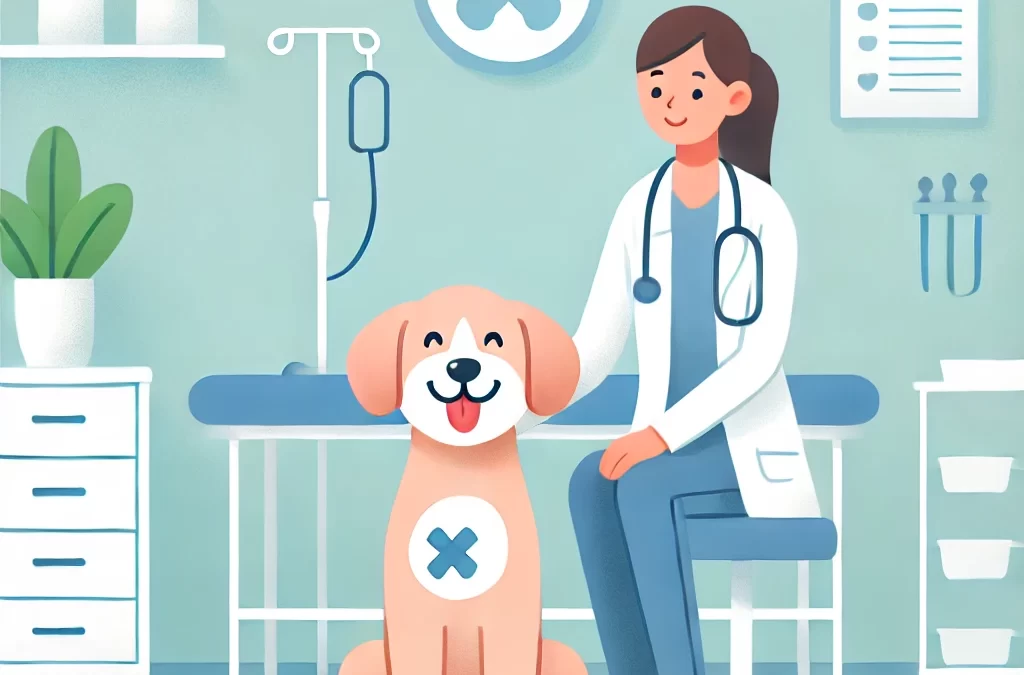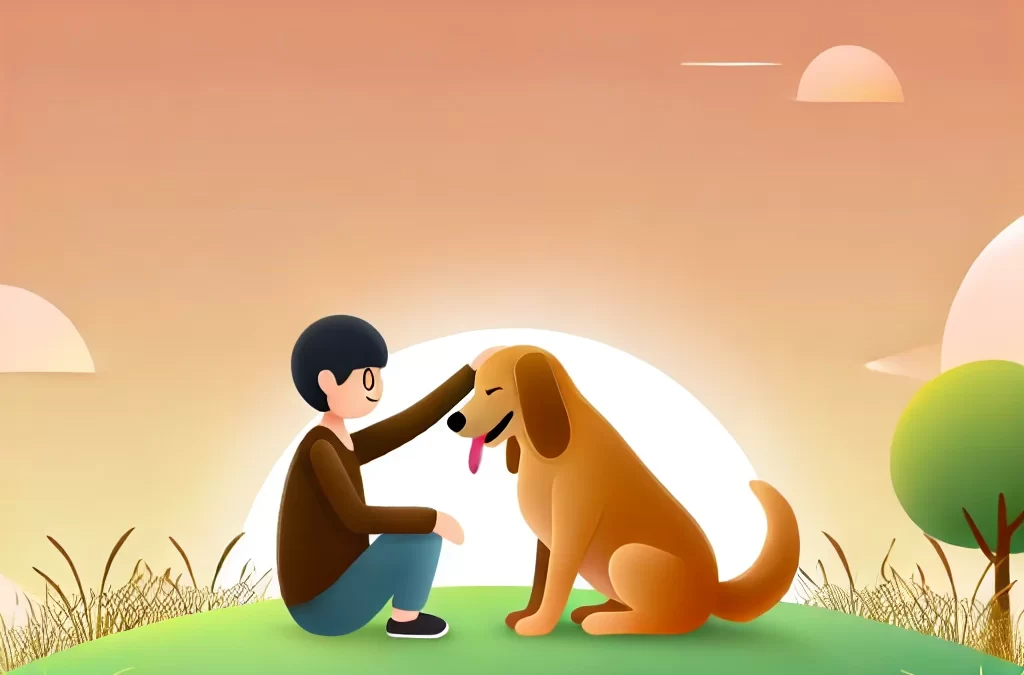
by TCMVET | Nov 27, 2024 | Dog Cancer & Tumors
Tigilanol tiglate, a groundbreaking treatment for certain types of canine tumors, has been a game-changer in veterinary oncology. As pet owners explore this innovative therapy, many are concerned about its cost. But does the conversation about cost go beyond just the monetary figure? Let’s dive into a unique perspective on the value of tigilanol tiglate—looking not just at what it costs, but what it offers in return.
Understanding Tigilanol Tiglate
Developed from the seeds of the blushwood tree, tigilanol tiglate (marketed as Stelfonta®) offers a non-surgical solution to mast cell tumors in dogs. Administered via injection, it works by destroying tumor cells and encouraging wound healing, often with visible results within days. This innovative therapy is particularly appealing for dogs that are not candidates for surgery due to age, health, or tumor location.
The Financial Costs
The price of tigilanol tiglate can vary widely, depending on several factors:
- Tumor Size
The drug is priced based on dosage, which is determined by the tumor’s volume. Larger tumors require higher doses, increasing the cost.
- Veterinary Fees
The cost of administration includes pre-treatment assessments, sedation, the procedure itself, and follow-up care. These professional fees can vary by location and clinic.
- Post-Treatment Care
While many dogs recover quickly, some may require additional wound management, which can add to the overall expense.
On average, the cost for tigilanol tiglate treatment ranges from $500 to $2,500 or more, depending on the above factors.
The Emotional Costs
While financial expenses are significant, the emotional toll of treating a beloved pet must also be considered. Tigilanol tiglate offers a compelling alternative to invasive surgery, reducing the stress and recovery time for both pets and their owners.
- Less Anxiety for Your Dog
Surgery often involves longer recovery periods and higher risks, particularly for older dogs. Tigilanol tiglate minimizes these challenges, offering a less invasive solution.
- Peace of Mind for Owners
Watching a tumor shrink in real-time can be an emotionally rewarding experience. For many, the cost is justified by the visible, immediate results.
Cost vs. Value
When evaluating the price of tigilanol tiglate, it’s essential to consider its value:
- Quality of Life: The treatment focuses on preserving and enhancing the dog’s well-being without the risks associated with surgery.
- Time Saved: With a single injection, the treatment often eliminates the need for lengthy recovery periods.
- Emotional Relief: The ability to see rapid improvement can be priceless for pet owners struggling with the burden of their dog’s diagnosis.
Hidden Savings
While the upfront costs may seem high, tigilanol tiglate can offer indirect savings:
- Avoidance of surgery-related complications and their associated costs.
- Reduced need for ongoing treatments or medications for tumor management.
- Prevention of future tumor-related issues through early intervention.
Affording Tigilanol Tiglate: Tips for Pet Owners
For those concerned about affordability, here are some tips to explore:
- Pet Insurance: Check whether your policy covers advanced treatments like tigilanol tiglate.
- Payment Plans: Many veterinary clinics offer installment plans to help manage costs.
- Non-Profit Assistance: Organizations dedicated to pet care sometimes provide financial aid for critical treatments.
- Budgeting Ahead: Early financial planning for your pet’s healthcare can ease the burden of unexpected expenses.
Final Thoughts
The cost of tigilanol tiglate isn’t just a number—it’s a measure of hope, innovation, and care. While the treatment may not fit every budget, it offers unparalleled value for dogs and their families by providing a minimally invasive, effective option for managing mast cell tumors. For many, the question isn’t just “How much does it cost?” but rather, “What is the cost of not trying?”
As you navigate your dog’s treatment journey, remember that the price of care includes not only the dollars spent but also the moments you gain together. Tigilanol tiglate represents a future where more dogs can live healthier, happier lives—an investment in love, longevity, and companionship.

by TCMVET | Nov 27, 2024 | Dog Cancer & Tumors
Deciding when to say goodbye to a beloved dog diagnosed with cancer is one of the hardest decisions any pet owner will face. While every case is unique, this article offers an alternative perspective on this emotionally charged topic—focusing on love, quality of life, and creating meaningful memories before letting go.
Understanding Your Dog’s Journey
Dogs with cancer, like humans, experience a range of physical and emotional states. Understanding their condition can help you make informed decisions:
- Pain Levels: Pain is often the first indicator. Despite advancements in palliative care, some dogs may experience persistent discomfort.
- Mobility Issues: Observe whether your dog can still enjoy activities like walking or playing. Loss of mobility may signify a decline in their quality of life.
- Appetite Changes: A sudden refusal to eat or drink could mean their body is shutting down.
- Emotional Changes: Dogs are emotional creatures. Notice if your dog seems withdrawn, anxious, or disinterested in their surroundings.
A New Framework: The “Five Joys” Approach
Instead of focusing solely on decline, consider this approach to assess your dog’s quality of life. Ask yourself:
- Eating: Does your dog still enjoy their favorite foods?
- Sleeping Comfortably: Are they resting without signs of pain or distress?
- Social Interaction: Do they seek companionship or enjoy being petted?
- Playing: Are they engaging in their favorite activities, even in a limited way?
- Exploring: Do they show interest in their environment?
When three or more of these joys are consistently missing, it may be time to consider euthanasia.
Saying Goodbye: A Holistic Approach
Saying goodbye doesn’t have to feel like the abrupt end of a chapter. Here are ways to honor your dog’s journey while easing the transition:
- Create a Bucket List
Celebrate your dog’s life by creating moments of joy. It could be as simple as a picnic in their favorite park or sharing a special treat.
- Focus on Comfort
Provide a calm, familiar environment. Use cozy bedding, gentle massages, and aromatherapy to ease their stress.
- Communicate with a Vet You Trust
A compassionate veterinarian can guide you in recognizing the signs of decline and help you plan a peaceful passing.
- Consider Home Euthanasia
Many pet owners opt for at-home euthanasia services, allowing their dog to pass in familiar surroundings, surrounded by loved ones.
- Preserve Their Legacy
Create a keepsake, such as a paw print mold or a scrapbook of cherished photos. This can help you process grief while celebrating your dog’s life.
Redefining the Final Goodbye
Euthanasia is not just a clinical decision—it’s an act of love. By choosing to let your dog go peacefully, you’re sparing them unnecessary suffering and honoring their dignity. Rather than focusing on “when to let go,” shift your perspective to “how to make their last moments meaningful.”
The Takeaway: It’s Okay to Grieve
Grief is a natural part of the process. It’s a testament to the deep bond you shared with your dog. Seek support from friends, family, or even online communities of pet lovers who understand what you’re going through.
In the end, the decision is deeply personal. Trust your instincts, honor your dog’s unique journey, and know that love, not time, defines your relationship with your pet.

by TCMVET | Nov 26, 2024 | Dog Cancer & Tumors
When a pet parent hears the word “tumor,” it’s like a punch to the gut. The questions come flooding in: Is it cancerous? Will my dog be okay? And most importantly, what can I do to help? While modern veterinary medicine offers various treatments, many owners are turning to natural, holistic approaches to complement traditional care. Let’s explore some innovative and lesser-known options to help manage and potentially shrink tumors in dogs.
The Nature of Tumors in Dogs
Tumors in dogs can range from benign lipomas to malignant cancers like mast cell tumors or osteosarcomas. The treatment plan depends on the type, size, and stage of the tumor, but addressing it often involves a mix of conventional treatments (like surgery or chemotherapy) and supportive therapies to boost overall health.
But here’s the catch: not all treatments have to be invasive or synthetic. Nature has provided us with a treasure trove of resources that may help shrink tumors while supporting your dog’s well-being.
Nutritional Support: Food as Medicine
- Mushroom Powerhouses
Medicinal mushrooms like shiitake, reishi, and turkey tail are rich in beta-glucans, which can help regulate the immune system and may slow tumor growth. Studies in veterinary oncology suggest that these fungi can reduce the progression of certain cancers. A sprinkle of powdered mushroom supplements in your dog’s food could be a game-changer.
- Golden Paste (Turmeric Blend)
Turmeric is known for its active compound, curcumin, a powerful anti-inflammatory and antioxidant. Curcumin has been shown to disrupt cancer cell growth in some studies. Mix turmeric powder with coconut oil and black pepper to create a dog-friendly golden paste.
- Omega-3 Fatty Acids
Found in fish oil or flaxseed, omega-3s are natural anti-inflammatories that can slow the growth of tumors and support overall health. Add it to your dog’s meals for a simple yet impactful dietary boost.
Natural Supplements for Tumor Management
- CBD Oil
Cannabidiol (CBD) has gained traction for its potential anti-tumor effects. It’s believed to induce apoptosis (programmed cell death) in cancer cells and reduce inflammation. Always choose a pet-specific CBD oil that’s free from THC and consult your vet for the right dosage.
- Essiac Tea
A blend of herbs including burdock root, slippery elm, and sheep sorrel, Essiac tea has long been used as a natural remedy for tumors. It’s available in liquid or capsule form and is believed to help detoxify the body and shrink abnormal growths.
- Chuanxiong (Szechuan Lovage)
A lesser-known but potent traditional Chinese herb, Chuanxiong has properties that improve circulation and reduce inflammation. Some holistic vets recommend it as part of an herbal protocol for managing tumors.
Holistic Therapies
- Acupuncture
While not directly shrinking tumors, acupuncture can improve blood flow, reduce pain, and enhance the efficacy of other treatments. It’s a great addition to a multi-faceted care plan.
- Hyperbaric Oxygen Therapy (HBOT)
Tumors thrive in low-oxygen environments. Hyperbaric oxygen therapy saturates the body with oxygen, potentially slowing tumor growth and aiding in healing.
Lifestyle Adjustments
- Dietary Overhaul
A low-carb, high-protein diet can starve certain tumors that rely on sugar for growth. Consider a raw or cooked diet tailored to your dog’s specific needs.
- Stress Reduction
Chronic stress can suppress the immune system, making it harder for your dog to fight off diseases. Ensure your dog’s environment is calm and enriched with activities they enjoy.
- Detoxifying the Environment
Reduce exposure to harmful chemicals like pesticides, synthetic air fresheners, and processed foods. These environmental toxins can burden your dog’s system, making recovery more challenging.
The Power of Combining Modern and Natural Approaches
While natural therapies offer incredible benefits, they’re not a standalone solution for all dogs. Partnering with a vet who understands integrative care is crucial. This ensures your dog receives the best of both worlds: the life-saving power of modern medicine and the gentle support of natural remedies.
A Hopeful Outlook
The journey of helping your dog through a tumor diagnosis can feel daunting, but remember: you’re not alone. With a blend of dietary changes, natural supplements, and holistic therapies, you can give your dog a fighting chance while improving their quality of life.
Sometimes, the smallest changes—a dash of turmeric, a spoonful of mushroom powder, or a drop of CBD—can make the biggest difference.

by TCMVET | Nov 26, 2024 | Food & Health
As pet owners, we constantly search for ways to enhance our dogs’ well-being. While mainstream supplements like fish oil or glucosamine are widely used, one unique option gaining popularity is shiitake mushroom powder. This ancient superfood, traditionally revered in Asian cuisine and medicine, is making its way into the pet wellness world with promising benefits. Let’s delve into why shiitake mushroom powder might be the next game-changer for your furry friend.
What Is Shiitake Mushroom Powder?
Shiitake mushrooms (Lentinula edodes) are a type of edible fungus known for their rich umami flavor and potent health properties. When ground into a fine powder, this ingredient becomes a versatile supplement that can be easily added to your dog’s meals. Packed with essential nutrients like vitamins B and D, selenium, copper, and polysaccharides, shiitake mushrooms are much more than just a culinary delight.
The Surprising Health Benefits for Dogs
Shiitake mushroom powder isn’t just a trendy addition; it’s backed by science. Here are some ways it can improve your dog’s health:
- Immune System Support
Shiitake mushrooms contain beta-glucans, compounds known for their immune-boosting properties. These help strengthen your dog’s defenses against infections and diseases, making it especially beneficial for aging dogs or those with weakened immune systems.
- Anti-Inflammatory Properties
If your dog suffers from arthritis, allergies, or other chronic inflammatory conditions, the natural compounds in shiitake mushrooms can help reduce inflammation and promote comfort.
- Antioxidant Powerhouse
Rich in antioxidants like selenium, shiitake mushrooms combat oxidative stress in dogs, which can slow down aging and reduce the risk of chronic illnesses.
- Digestive Health
The prebiotic fibers in shiitake mushrooms support gut health by feeding beneficial bacteria, improving digestion, and helping with nutrient absorption.
- Cancer Prevention and Support
Shiitake mushroom powder is gaining attention for its potential anti-cancer properties, particularly due to compounds like lentinan. While not a cure, it can be a complementary therapy for dogs battling tumors.
How to Introduce Shiitake Mushroom Powder to Your Dog
- Start Small
Begin with a small amount (around 1/4 teaspoon for small dogs and 1/2 teaspoon for larger dogs) mixed into their food. Gradually increase as your dog adjusts.
- Choose High-Quality Powder
Ensure you’re using a product specifically formulated for pets. Organic, pesticide-free, and minimally processed powders are best.
- Observe and Adjust
Monitor your dog for any changes in digestion or behavior. While rare, some dogs may have sensitivities to mushrooms.
The Ethical Bonus: Sustainability
Using shiitake mushroom powder aligns with eco-friendly practices. Mushroom farming requires minimal water and land, making it a sustainable choice. As more pet owners embrace environmentally conscious lifestyles, adding shiitake powder to your dog’s diet can be a small step toward a greener future.
Breaking the Myths: Are Mushrooms Safe for Dogs?
Many pet owners hesitate when they hear “mushroom” due to concerns about toxicity. While it’s true that some wild mushrooms are dangerous, cultivated varieties like shiitake are perfectly safe for dogs when given in moderation. As always, consult your veterinarian before introducing any new supplement.
Shiitake Powder Recipes for Dogs
To make mealtime exciting, here are some simple ways to incorporate shiitake mushroom powder into your dog’s diet:
- Shiitake Sprinkle: Dust a pinch of powder over your dog’s regular kibble or wet food.
- Golden Paste: Mix shiitake powder with turmeric, coconut oil, and water for an anti-inflammatory boost.
- Homemade Treats: Bake dog biscuits using oat flour, peanut butter, and a teaspoon of shiitake powder.
Conclusion: A Superfood for Super Dogs
Shiitake mushroom powder is more than just a supplement; it’s a holistic approach to canine wellness. From boosting immunity to supporting gut health, its natural benefits can complement your dog’s diet in a way few other supplements can.
So why not step away from the ordinary and give this unique superfood a try? Your dog might just thank you with a wagging tail and a healthier life.
by TCMVET | Nov 25, 2024 | Food & Health
Polysaccharide peptides (PSPs), derived from medicinal mushrooms, have long been lauded for their remarkable health benefits in humans. Now, their potential as a groundbreaking supplement for canine health is gaining attention. Cellular PSP, a concentrated form of these powerful compounds, offers a holistic approach to boosting immunity, combating chronic diseases, and enhancing overall well-being in dogs.
What Is Cellular PSP?
Cellular PSP is a bioactive compound derived from medicinal mushrooms like Trametes versicolor (Turkey Tail) and Ganoderma lucidum (Reishi). It combines polysaccharides and peptides, which work synergistically to deliver immunomodulatory, anti-inflammatory, and antioxidant benefits. These properties make it a valuable addition to the health regimen of dogs dealing with chronic illnesses, cancer, or immune-related conditions.
How Cellular PSP Benefits Dogs
Immune System Support
Cellular PSP is a natural immune modulator, helping to regulate and strengthen your dog’s immune defenses. It’s particularly beneficial for dogs with:
- Cancer: By enhancing natural killer (NK) cell activity and stimulating white blood cells, it helps the body combat tumors.
- Chronic infections: Cellular PSP aids in fighting persistent infections by boosting immune response.
Anti-Cancer Properties
Studies on PSP have shown promising results in reducing tumor growth and improving survival rates. For dogs, this means:
- Slowing the progression of cancers like lymphoma, osteosarcoma, and mast cell tumors.
- Reducing the side effects of chemotherapy, such as fatigue and weakened immunity.
Anti-Inflammatory Effects
Chronic inflammation is a root cause of many diseases in dogs, including arthritis and gastrointestinal disorders. PSP reduces inflammation at the cellular level, providing relief from:
- Joint pain and stiffness.
- Digestive issues like inflammatory bowel disease (IBD).
Antioxidant Protection
Cellular PSP’s antioxidant properties neutralize free radicals, preventing cellular damage and supporting overall health. This is particularly valuable for aging dogs, as it helps mitigate the effects of oxidative stress, which can lead to age-related diseases.
Is Cellular PSP Right for Your Dog?
While the benefits of Cellular PSP are extensive, it’s essential to consult with a veterinarian before introducing it to your dog’s diet. Dogs with specific health conditions or undergoing chemotherapy may require tailored dosages for optimal results. Moreover, always choose PSP supplements from trusted sources to ensure purity and efficacy.
Conclusion
Cellular PSP represents a cutting-edge approach to canine wellness, bridging the gap between natural therapies and modern science. By supporting immunity, reducing inflammation, and providing antioxidant protection, this powerful supplement can enhance your dog’s quality of life. Whether used as a preventative measure or as part of a broader treatment plan, Cellular PSP offers hope and holistic healing for dogs of all ages.





